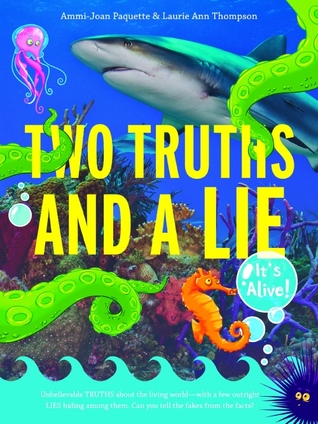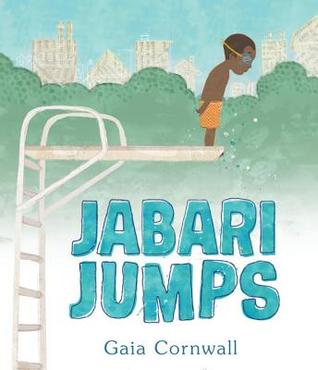Every Wednesday I join Alyson Beecher from kidlitfrenzy and other
kidlit bloggers to share wonderful nonfiction picture books.
The intention of today's blog post is to give professionals that work in the
education field new nonfiction reading material and ideas to use
education field new nonfiction reading material and ideas to use
with students to promote a love of reading nonfiction materials.
I've never been good at the game Two Truths and a Lie unless I have a lot of background knowledge of the subject. I guess I'm too gullible. I believe the written word. But that's exactly what we need to be teaching students - fact check your resources, how do you know it's a reliable source?
This new book by Joan Paquette and Laurie Thompson is going to be a great book to have in classrooms.

Two Truths and a Lie - It's Alive!
by Ammi-Joan Paquette and Laurie Ann Thompson
published by Walden Pond Press
June 27th
First of all, with all of the amazing science found within it, kids who are looking for science books are going to eat this book up! Our schools are full of readers who are looking for factual information, books that will amaze them with their facts, and this book is a well welcomed addition for them! But it's not just your science readers who will enjoy it, kids who like to share and talk about books with friends, kids who like a challenge - because 1 in every 3 stories is a lie - are going to love this book.
But it's not just your readers, it's also you, the teacher, who will find fantastic uses for this book. Try this idea out:
- Have students, in groups or on their own, read a story. Make sure you have them read 1 of the 3 stories that goes together. As they read, ask questions about the subject? What part seems to be a fabrication? What part do they need to verify or get more information?
- Get them ready to research. What can they find about the subject of the story? What sources will they use to do their fact checking? I love how Paquette and Thompson talk about how even "lies might have kernels of buried truth".
- Get together in groups - everyone that read at least one of the three stories. Talk, share, discuss. What did they discover?
- After they find the lie, go back and look at the writing - what did the authors do to make the story sound so realistic? And trust me, they are! I was 0 for 5 - finally found the lie in the 6th group of stories! If the authors can make something real, how do we know the information we are reading is true?
The authors of this book have also added some amazing resources. Make sure you refer to their research guide where they give very helpful tips about fact checking and knowing your resources. Since so much of our research is done through the internet, how do you know the information is accurate? They've included some great pieces of information you'll want to go over with your class.
There is also an extensive source list they used for each of their stories. Be sure to see how varied it is. Paquette and Thompson also have included photographs, sidebars, and bold print with captions that have definitions to help build vocabulary for readers.
Such an amazing book for your library. I hope a copy or two finds their way into your collection! Look for it on June 27th!












































